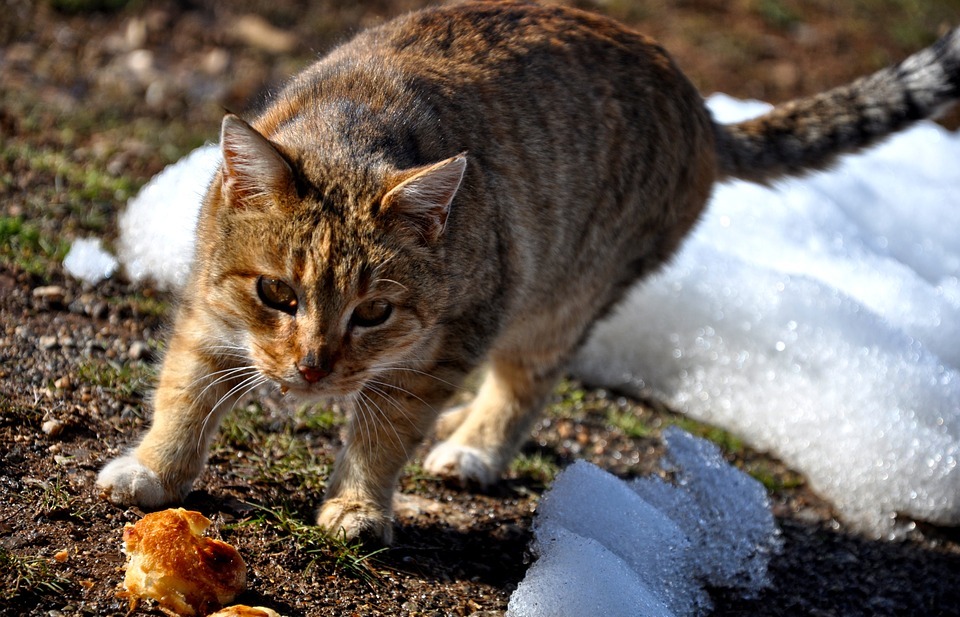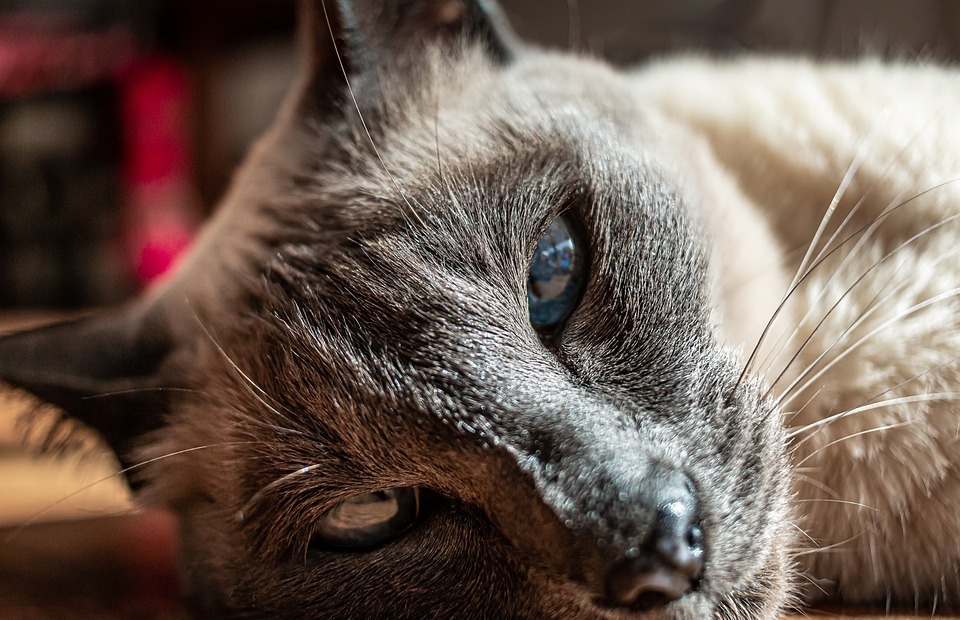This article provides a comprehensive exploration of the crucial role of water in a cat's life, investigating the implications of dehydration and the factors that determine how long a cat can survive without water. We will examine the signs of dehydration, the potential dangers of prolonged water deprivation, and provide practical tips to ensure your feline companion remains adequately hydrated.
Part 1: The Fundamental Importance of Water for Cats

1.1: Water: A Life-Sustaining Element for Feline Well-being
- Water constitutes a significant portion of a cat's body, ranging from 60% to 70%, making it a vital component for overall health.
- Its importance extends beyond simply quenching thirst, playing a crucial role in numerous essential bodily functions, including:
- Temperature Regulation: Water helps regulate body temperature, enabling cats to cope with both hot and cold environments.
- Nutrient and Oxygen Transport: It acts as a medium for transporting essential nutrients and oxygen throughout the body, ensuring cells receive the necessary resources for proper functioning.
- Waste Removal: Water is essential for flushing out waste products from the body, maintaining kidney function and overall health.
- Joint and Organ Lubrication: Water lubricates joints and organs, preventing friction and promoting smooth movement.
- Electrolyte Balance: It plays a vital role in maintaining the balance of electrolytes in the body, essential for various physiological processes.
1.2: Sources of Water for Cats: Beyond the Water Bowl
- Fresh water bowls are the primary source of hydration for cats, providing a readily accessible and preferred source.
- Cats can also obtain some water from their food, particularly wet food, which typically contains a higher moisture content than dry food.
- However, it is crucial to understand that relying solely on food for hydration is insufficient and can lead to dehydration, especially in cats consuming primarily dry food.
- Other sources, such as licking condensation from surfaces, may provide minimal hydration, but should not be considered a reliable alternative to fresh water.
Part 2: Understanding the Dehydration Process in Cats

2.1: Identifying the Warning Signs of Dehydration
- Recognizing the signs of dehydration early on is crucial for timely intervention and preventing serious complications.
- These signs can be subtle initially but become more pronounced as dehydration progresses. Look out for:
- Increased Thirst: A noticeable increase in water consumption is a common early indicator.
- Dry Mouth and Gums: Dehydrated cats often have dry, sticky gums and a parched mouth.
- Loss of Appetite: Dehydration can lead to a decrease in appetite as the body prioritizes water intake.
- Lethargy and Weakness: A decrease in energy levels and overall weakness is a significant sign of dehydration.
- Sunken Eyes: The eyes may appear sunken in the sockets, indicating fluid loss.
- Decreased Skin Elasticity: When you gently pinch the skin on the back of the neck, it should quickly snap back into place. In dehydrated cats, the skin will remain tented for a longer duration.
- Constipation: Dehydration can cause constipation due to reduced bowel motility.
- Rapid Breathing: Dehydration can strain the respiratory system, leading to rapid breathing.
2.2: Stages of Dehydration: A Spectrum of Severity
- Dehydration is classified into three stages, each with varying levels of severity and associated risks:
- Mild Dehydration (1-5% loss of body water): Often characterized by subtle signs, which can be readily addressed with prompt water intake.
- Moderate Dehydration (6-10% loss): More noticeable symptoms, including lethargy, decreased appetite, and potentially sunken eyes. Requires veterinary attention and prompt hydration therapy.
- Severe Dehydration (over 10% loss): A life-threatening condition requiring immediate medical intervention. Symptoms can include rapid breathing, weakness, and collapse. Urgent veterinary care is essential for survival.
2.3: The Dangers of Dehydration: A Cascade of Health Complications
- Dehydration is a serious condition that can have severe consequences for a cat's health, potentially leading to a cascade of health complications.
- Prolonged dehydration can result in:
- Impaired Kidney Function: The kidneys rely heavily on water to filter waste products from the blood. Dehydration can lead to reduced kidney function, potentially causing kidney failure.
- Electrolyte Imbalance: Water plays a crucial role in maintaining the balance of electrolytes in the body. Dehydration can disrupt this balance, affecting various physiological processes, including nerve function and muscle contraction.
- Circulatory Problems: Dehydration can lead to reduced blood volume, impairing circulation and potentially leading to heart problems.
- Organ Failure: The lack of adequate water can compromise the function of various organs, including the kidneys, liver, and brain, potentially leading to organ failure.
- Death: Severe dehydration is a life-threatening condition that can ultimately lead to death if left untreated.
Part 3: Factors Influencing Survival Time Without Water: Understanding the Variables
3.1: Age and Health Condition: A Spectrum of Vulnerability
- Age and overall health condition play a significant role in determining how long a cat can survive without water.
- Kittens and senior cats are more susceptible to dehydration due to their smaller body size and potentially compromised immune systems.
- Cats with pre-existing health conditions, such as kidney disease, diabetes, or heart problems, are at higher risk of dehydration and its consequences.
3.2: Environmental Temperature: The Impact of Heat and Humidity
- Environmental temperature is a crucial factor influencing water loss and survival time without water.
- Hot and humid weather increases water loss through sweating and panting, putting cats at higher risk of dehydration.
- Cats living in hot climates or exposed to prolonged heat require increased water intake to compensate for fluid loss.
3.3: Activity Level: Energy Expenditure and Hydration Needs
- Activity level also plays a role in water requirements. Active cats that engage in vigorous exercise need more water to replenish fluids lost through sweating and exertion.
- Inactive cats, on the other hand, may require less water intake as their energy expenditure is lower.
3.4: Diet: The Impact of Dry vs. Wet Food
- The type of diet a cat consumes can influence its hydration needs.
- Wet food generally contains a higher moisture content than dry food, providing some level of hydration.
- Cats that primarily consume dry food require a greater intake of water to compensate for the lower moisture content in their diet.
Part 4: The Timeframe for Survival: A Matter of Days, Not Weeks
4.1: General Survival Time: A Delicate Balance
- A healthy adult cat can typically survive for a few days without water, but this should not be considered a safe or acceptable timeframe.
- Dehydration can set in relatively quickly, even within a few hours, and even a short period without water can pose significant risks to a cat's health.
4.2: Factors Affecting Survival Time: A Complex Equation
- The survival time without water is influenced by a combination of factors, including:
- Age and health condition
- Environmental temperature
- Activity level
- Dietary intake
4.3: The Importance of Prompt Action: Time is of the Essence
- If you suspect your cat is dehydrated, seeking veterinary attention immediately is crucial.
- Early intervention can significantly increase the chances of survival and prevent serious health complications.
- Dehydration can progress rapidly, and delaying treatment can have dire consequences.
Part 5: Ensuring Adequate Hydration: A Proactive Approach
5.1: Fresh Water Availability: A Constant Supply
- Provide multiple water bowls in different locations throughout your home to ensure easy access to fresh water for your cat.
- Change the water in the bowls regularly, at least once a day, to maintain freshness and cleanliness, preventing bacteria growth and encouraging your cat to drink.
- Avoid using plastic bowls as they can harbor bacteria and may impart an unpleasant taste or odor to the water.
- Choose ceramic or stainless steel bowls for optimal hygiene and safety.
5.2: Water Bowl Preferences: Catering to Individual Tastes
- Cats have individual preferences regarding water bowls, including size, shape, and material.
- Experiment with different bowl options, including ceramic, stainless steel, and even fountains to see what your cat finds most appealing.
- Some cats prefer bowls with a wide opening, while others may prefer narrow bowls.
- Observe your cat's behavior and adjust the water bowl accordingly.
5.3: Encouraging Water Intake: Making Hydration Enjoyable
- Consider using a water fountain to encourage drinking. The flowing water can be appealing to cats, stimulating their interest in drinking more frequently.
- Add a few ice cubes to the water bowl for a refreshing treat, especially in hot weather.
- Offer a variety of wet food options, as they generally contain a higher moisture content than dry food, contributing to hydration.
5.4: Monitoring Water Consumption: Keeping a Watchful Eye
- Regularly observe your cat's water intake and note any changes in behavior or drinking habits.
- A significant decrease in water consumption can be an early sign of dehydration or underlying medical conditions.
- If you notice any unusual changes, consult your veterinarian promptly for a proper diagnosis and treatment plan.
Part 6: Addressing Common Questions: Dehydration and Your Cat
6.1: How Can I Tell if My Cat is Dehydrated?
- Look out for signs of dehydration, such as increased thirst, dry mouth and gums, sunken eyes, lethargy, and decreased skin elasticity.
- If you notice any of these symptoms, it is essential to consult your veterinarian immediately for assessment and treatment.
6.2: Can Cats Get Water from Their Food?
- While cats can obtain some water from their food, particularly wet food, it is crucial to understand that relying solely on food for hydration is insufficient.
- Cats need a consistent supply of fresh water in addition to their food to meet their hydration needs.
6.3: What are the Potential Consequences of Dehydration in Cats?
- Dehydration can lead to a range of serious health complications, including impaired kidney function, electrolyte imbalance, circulatory problems, organ failure, and even death.
6.4: How Long Can a Cat Survive Without Water in Extreme Heat?
- Cats are more susceptible to dehydration in hot weather, especially in extreme heat.
- In such conditions, they can become dehydrated much faster, and survival time without water may be significantly reduced.
- It is crucial to provide ample fresh water and monitor their hydration status closely during hot periods.
6.5: What Should I Do if My Cat Refuses to Drink Water?
- Try offering different water bowls, using fresh water, adding ice cubes to the water, or using a water fountain to encourage drinking.
- If your cat continues to refuse water, consult your veterinarian to rule out any underlying medical conditions that may be contributing to their reluctance to drink.
6.6: Can I Give My Cat Electrolyte Solution?
- It is generally not recommended to give cats electrolyte solutions without consulting a veterinarian.
- Electrolyte imbalances can be dangerous and require professional guidance to ensure proper dosage and administration.
Everyone is watching
-

Are Cat Ribs Flexible? Understanding Their Anatomy
CATS & KITTENSThis article delves into the fascinating world of feline anatomy, exploring the flexibility of cat ribs and ho...
-

Can Cats Eat Bananas? (Everything You Need to Know)
CATS & KITTENSThis article dives into the intriguing question of whether cats can safely enjoy the sweet, yellow fruit, bana...
-

Cat Lifespan: How Long Do Cats Live?
CATS & KITTENSThis comprehensive guide explores the factors influencing the lifespan of our feline companions, providing ins...
-

Can Cats Get COVID-19? What You Need to Know
CATS & KITTENSThis article will delve into the fascinating world of feline COVID-19 susceptibility. We'll explore whether ca...
-

Can Cats Eat Eggs? A Complete Guide to Egg Safety for Your Feline Friend
CATS & KITTENSWhen it comes to treating our furry companions, we all want to ensure we're doing what's best for them. Eggs...
